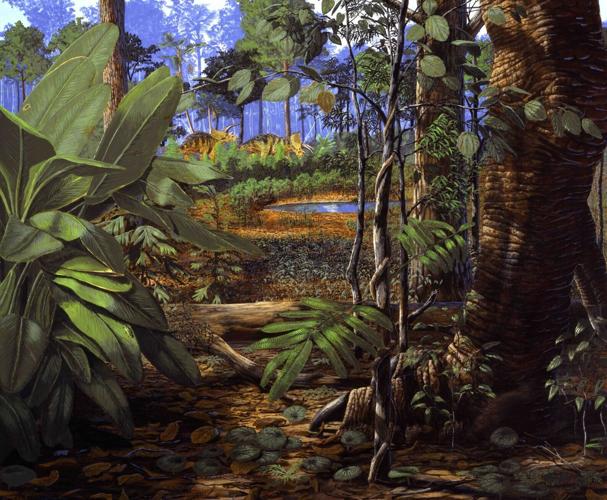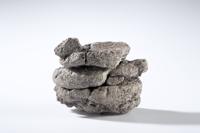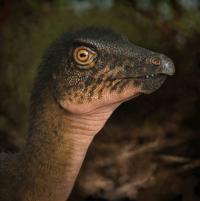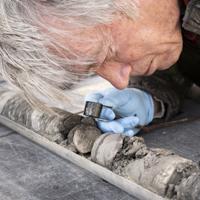‘Nothing short of magical’: Dinosaur fossil discovered deep below Colorado museum
The untrained eye might have seen nothing out of the ordinary — a jumbled rock in the shape of a fist, not the vertebra of an ancient beast.
Fortunately, this dinosaur fossil in Denver was found at a workplace of well-trained eyes.
As Denver Museum of Nature and Science’s Bob Raynolds said in an announcement: “That this fossil turned up here, in City Park, is nothing short of magical.”
The fossil was uncovered beneath the parking lot on the north side of the museum, as explained in an article in the scientific journal Rocky Mountain Geology.
In January, as the museum oversaw deep drilling to explore a transition from natural gas to geothermal energy, resident researchers saw a coinciding opportunity for innovative, scientific coring to explore the geologic depths of the Denver Basin.
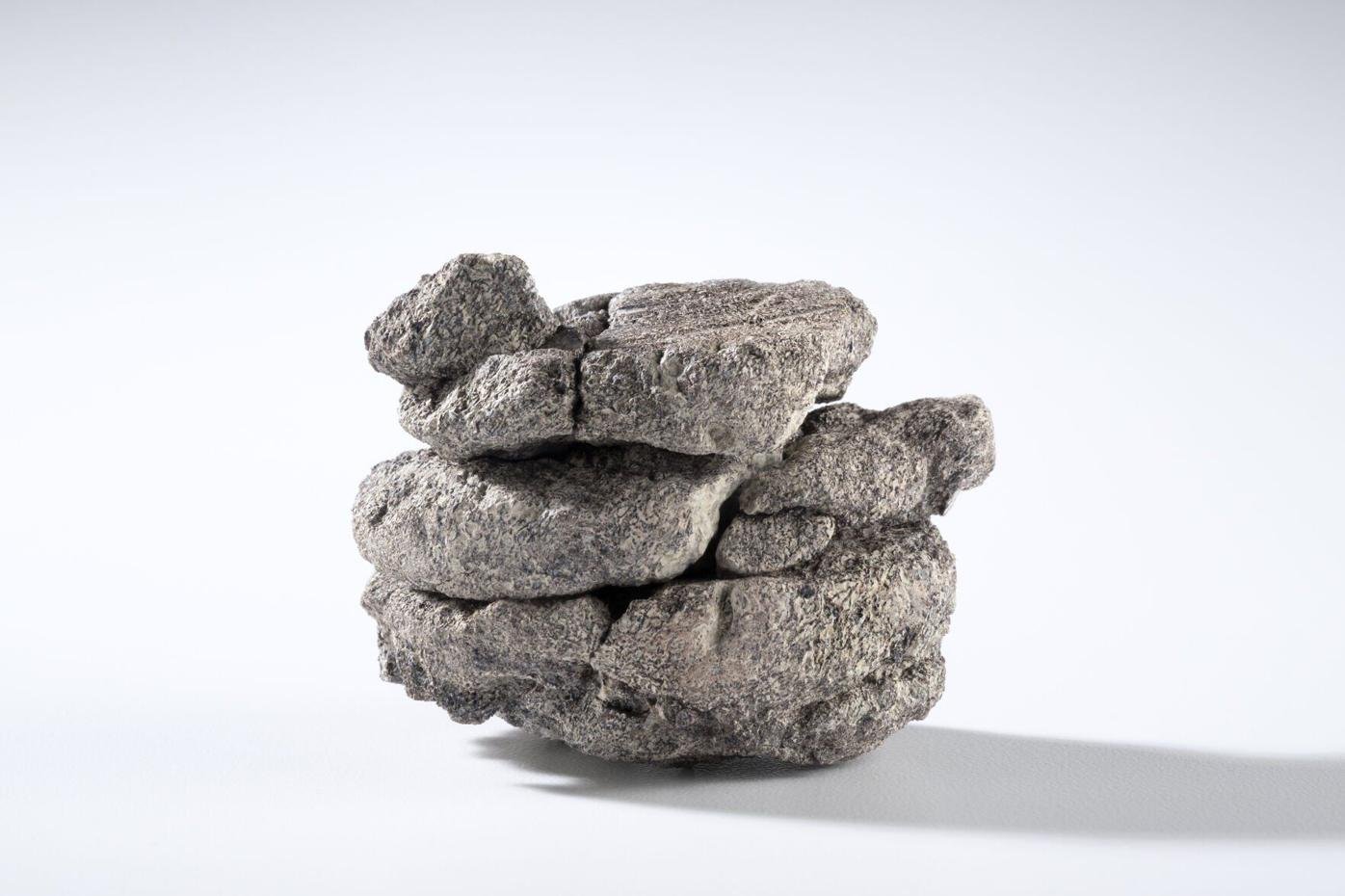
Ornithopod vertebra from the Denver Formation, from 763 feet of depth in the City Park core drilling in the parking lot at Denver Museum of Nature and Science.
Courtesy photo, Wicker, Richard M.

Ornithopod vertebra from the Denver Formation, from 763 feet of depth in the City Park core drilling in the parking lot at Denver Museum of Nature and Science.
“In my 35 years at the museum, we’ve never had an opportunity quite like this — to study the deep geologic layers beneath our feet with such precision,” Raynolds, a research associate in the museum’s Earth Sciences Department, said in a news release.
And never did he and fellow researchers imagine what they would find.
“This may be the most unusual dinosaur discovery I have ever been a part of,” said Patrick O’Connor, the museum’s director of Earth and Space Sciences.
Unusual and also “a scientifically and historically thrilling find for both the museum and the larger Denver community,” said James Hagadorn, curator of geology.
Researchers are calling the dinosaur fossil the oldest and deepest ever found in Denver. It was found 763 feet beneath the ground, encased in rock dated to about 67.5 million years ago.
The vertebra is believed to have belonged to a plant-eater of that Late Cretaceous period. The Rocky Mountain Geology article describes “part of a neural arch that shares similarities to those of ornithopod dinosaurs such as Thescelosaurus or Edmontosaurus.”

Image of a plant-eating ornithopod dinosaur, Thescelosaurus, during the latest Cretaceous Period, nearly 67 million years ago. These around 10- to 12-foot-long two-legged animals roamed the tropical swamps, forests and floodplains where Denver now stands. Their vertebrae are similar to the one found in the rock core deep below the museum.
Courtesy of Andrey Atuchin, Denver Museum of Nature & Science

Image of a plant-eating ornithopod dinosaur, Thescelosaurus, during the latest Cretaceous Period, nearly 67 million years ago. These around 10- to 12-foot-long two-legged animals roamed the tropical swamps, forests and floodplains where Denver now stands. Their vertebrae are similar to the one found in the rock core deep below the museum.
The article adds: “The bone occurs near the top of a sequence capped by carbonaceous mudstone, interpreted to represent a pond- or swamp-like environment.”
This was the environment of the Edmontosaurus, “one of the most populous herbivores” of the era, reads an article in Denver Museum of Nature and Science’s Catalyst magazine, which calls the smaller Thescelosaurus “agile and alert.” Along with the Tyrannosaurus rex, the creatures moved among “towering palm trees, thick vines and lush undergrowth.”
The fossil “offers a rare window into the ecosystem that once existed right beneath modern-day Denver,” Hagadorn said.
And the fossil adds a record to a long list of discoveries made around the metro area over the years.
While being called the oldest dinosaur fossil found in city limits, the Rocky Mountain Geology article mentions older remains found on the peripheries. That includes the skull of “Pops” the Triceratops, uncovered in 1982 in Weld County, and tracks that are the namesake of Triceratops Trail near Golden. The article continues: “Other, much older dinosaur remains are well known from the Jurassic Morrison Formation west of Denver at Dinosaur Ridge.”
The article includes a map of other notable discoveries: the Thornton Torosaurus identified in 2017 and T. rex remains in Littleton (found during apartment construction in 1992) and Boulder (found by a kid while hiking in 2021), not to mention reported finds during Coors Field construction that inspired Dinger, the purple Triceratops mascot. As for the next-deepest find, a Triceratops from Brighton is mapped.
Now that map includes the heart of Denver, City Park.

A Denver Museum of Nature and Science researcher eyes a dinosaur fossil found deep beneath the museum grounds.
Courtesy of Denver Museum of Nature and Science

A Denver Museum of Nature and Science researcher eyes a dinosaur fossil found deep beneath the museum grounds.
“Urban paleontological discoveries are rare but often ignite public interest in science and deepen our connection to nature,” researchers wrote in the scientific journal.
That a dinosaur — or perhaps yet more dinosaurs — existed below the Denver Museum of Nature and Science is only fitting, researchers suggested:
“It has potential to be incorporated into exhibits, where it could foster a learning experience that is rarely found in natural history museums. Furthermore, this type of discovery is an important reminder for local communities that science is literally being done below their feet.”
The fossil is now on display at the museum’s “Discovering Teen Rex” exhibit.







